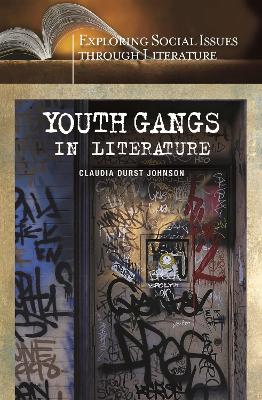Exploring Social Issues Through Literature
2 total works
The daily newspaper headlines revealing deaths, illnesses, and injuries in the workplace, along with the ongoing decline of workers' rights, make this book an especially timely volume. Included are chapters devoted to such widely read texts as Hard Times, Life in the Iron Mills, Bartleby the Scrivener, The Grapes of Wrath, and several others. Each chapter examines the historical background and plot of the work, the labor and workplace issues raised by the author, and the history of those issues since the text was published. Just a few of the issues raised are low wages, long hours, workplace dangers, unemployment, sexual harassment, and the struggle of immigrants. Each chapter provides topics for research and discussion, and cites works for further reading. The volume closes with a selected, general bibliography.
The volume discusses such issues as low wages, long hours, workplace dangers, unemployment, sexual harassment, lack of job security or medical care, and the struggle of immigrants. Each chapter closes with topics for research and discussion, along with a list of works for further reading. An introductory essay examines the consequences of the industrial revolution and the economic philosophies central to society. The volume closes with a selected, general bibliography. Students in literature and social studies classes will value this helpful guide.
Gang culture is one of the most volatile issues to have impacted young people throughout history and around the world. By focusing on the fictional representation of youth gangs, this work presents a unique perspective on an all-too-real phenomenon and its many manifestations. Organized chronologically and topically, the volume begins with a powerful essay tracing the origins and developments of youth gangs, from the early days of the Wild West to immigration gangs in 19th- and 20th-century America and the
Twenty chapters, each introduced with a primary document, fully explore the different types of gangs, identifying their time, place, struggles, and demographic character. Included are the early gangs of New York City, prison gangs, Asian gangs, school gangs, African American gangs, and girl gangs. Each chapter analyzes one or more works of fiction in terms of its thematic message and the light it sheds on the nature of the depicted gang situation. The examined fiction will be of special interest to students and educators, and includes works often found on assigned reading lists, such as The Chocolate War, The Outsiders, and Lord of the Flies. Popular works, such as Gangs of New York, provide an historical perspective on early immigrant gangs, while presenting timeless themes of identity struggles that resonate for young people everywhere. In addition to the literary works and primary documents, suggestions for additional titles and sources for further information on the topics are offered.

